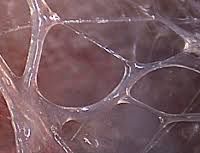What’s Fascial Unwinding?
Like Craniosacral Therapy. ‘fascial unwinding’ originated in osteopathy and the term was originally coined to describe the involuntary, spontaneous, movements that many people experience during treatment sessions.
What does Fascial Unwinding Do?
The more stressful events we experience, the more wound-up our system can become. After experiencing an unwinding people commonly describe feeling more spaciousness in their body.
What’s Fascia?
Fascia is the connective tissue system that links all bodily organs and systems and the trillions of cells in our body, hence touching into the fascial system offers us a way to engage with the body as one whole system. The Fascial System, is the system that compartmentalises yet links everything from the top of our head to our toes – whether it be the Gerota’s fascia around the kidneys, the periosteum around the bone or the pericardium around the heart.
The fascia is immensely strong and if any part of the fascia is twisted, pulled and imbalanced, it will affect the whole body in some way. Fascia can tighten, harden, twist, glue together and become inflamed due to constant stress, injuries and lack of movement and when fascia tightens and hardens it can cause body systems not to function optimally.
Hence the aim of Fascial unwinding is to support the body in unwinding interwoven areas of tension, so the body can return to a freer, more open, fluid and functional state.
New Frontiers

After decades of being ignored and discounted in science and healthcare, in the last 20+ years, fascial research has exploded leading to an acknowledgement of fascia as being, a whole-body system in its own right.
By understanding the dynamics of the fascial system as it relates to all organ systems of the body, musculoskeletal, endocrine, neurovascular and immune etc Fascia is becoming recognized as a key regulatory system in health and disease, that holds onto memory both physically and emotionally.
A Whole-Body, Whole-person Approach
When we experience discomfort or pain, there’s a tendency to focus in on that area and to loose sight of the rest of the body, although pain and dysfunction rarely originate from where the symptoms are felt.
For example, the pelvis, legs and feet can be a major cause of issues further up the body, including headaches and neck and shoulder pain.
This is why an old ankle sprain unwinding and coming back into place, may resolve an acute pain in the shoulder and the pelvis coming back into alignment, may unwind chronic tension in the shoulders and the jaw.
Nothing in the body, mind and emotions occurs in isolation as everything is a relationship !
For more information on fascial unwinding click on the article below.
